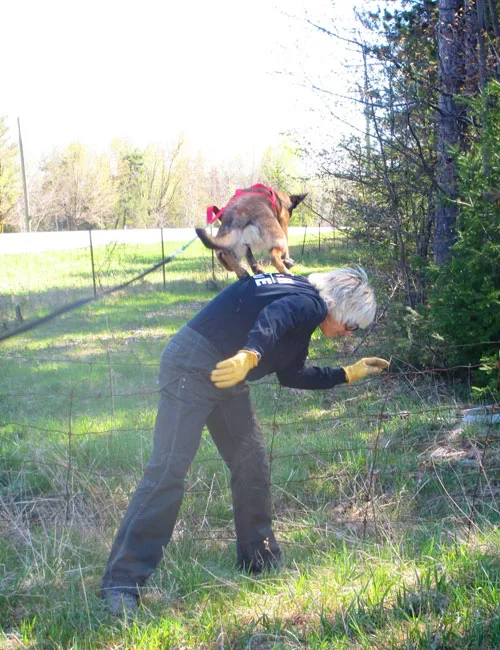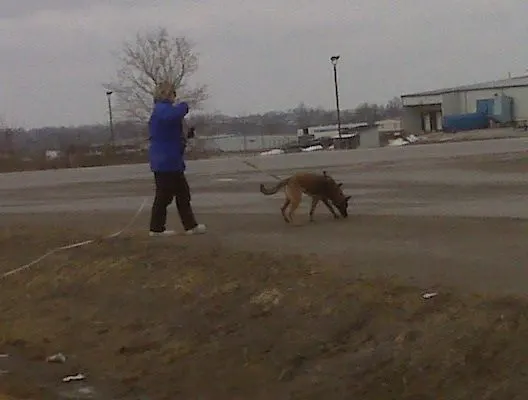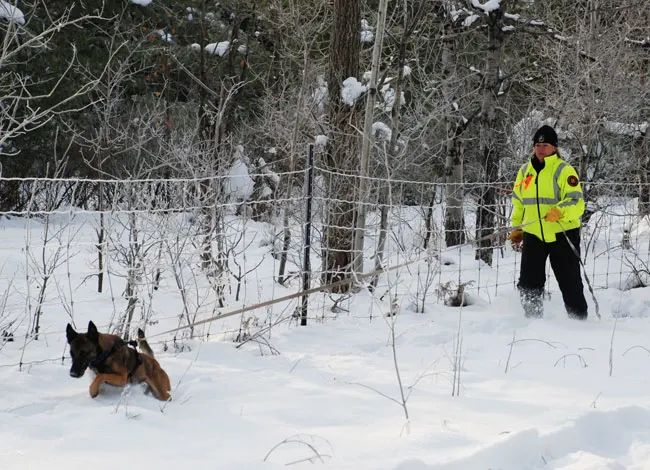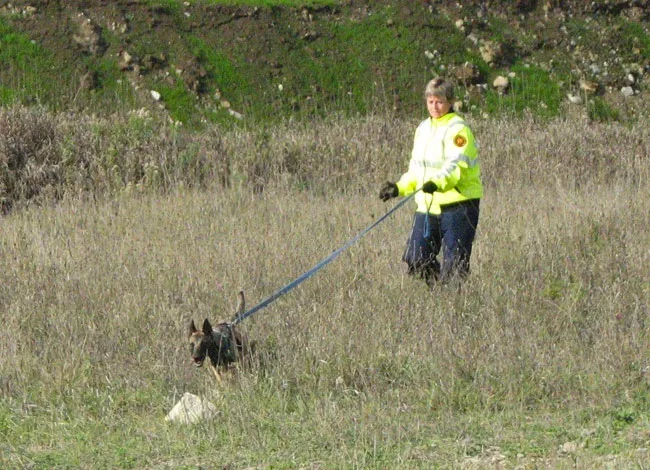My journey into dogs with jobs continues. Today, we’re tagging along with Susan Read and her dog Zori to learn about search and rescue dogs.
Do you know a dog with an interesting job? Leave a comment or contact me at homeon129acres@hotmail.com, and they may be featured in an upcoming post.
Here in Ontario, search and rescue is handled by civilian teams. Susan and Zori are volunteers who are called upon by police agencies to find missing people.
What is the best breed for search and rescue?
Zori is a Belgian Malinois, a breed commonly used for search and rescue.
Most search and rescue dogs are herding breeds, like Malinois and German Shepherds. Although, other breeds such as Labrador Retrievers and bloodhounds also excel at search and rescue.
Beyond the breed, there are certain qualities that make a dog a good candidate for search and rescue.
Susan describes search and rescue dogs as:
- confident
- friendly
- and outgoing
“These dogs must be able to cover all kinds of terrain and have the stamina to handle distance and the time needed to complete a task,” she says. “Work ethic is essential in rescue work as is a dog who is focused and able to work through distractions. Prey and hunt drive and play drive are essential.”
Training a dog for search and rescue
Play is at the root of search and rescue training.
“Usually, training starts as a game played with puppies, starting with simple reward-based training, and expanding outward to “games” with more specific job skills,” says Susan.
In Ontario, search and rescue dogs are owned and trained by civilian handlers. Preparing a dog for search and rescue certification can take between a year and a half to two years.
“In the beginning stages of the dog’s training, we work at getting the dog to understand that finding human odour and committing to this odour will bring a reward. Ideally, working with a dog with tremendous toy drive helps to accomplish this much quicker and more easily,” says Susan.
The odour that the dogs track comes from skin cells. These cells, called rafts, are shed constantly from our bodies. The bacteria on our skin produce gases that can be detected—and followed—by dogs.
Dogs are trained to alert their handler that they have located human odour. As training progresses, the dogs are presented with different challenges. For example, the bacteria on our skin can be affected by factors such as temperature, humidity, light.
Therefore, handlers will gradually increase the level of difficulty, introduce challenges in terrain or include more distractions in their training programs.
Socialization for search dogs
Along with specialized training, socializing is key in helping a dog to become a successful search and rescue dog.
Susan explains, “These dogs need to be socialized early on in age, but keeping in mind fear periods. Emphasis with socializing needs to be placed on quality and not quantity. Pup classes leading into obedience classes, fungility leading to agility, and exciting visits to stores, parks, etc. are a must. The important thing is to solidify manners, key skills and self control.”

Susan prefers to work Zori off-lead so that her movements are not restricted. “I will slow her down and can, unintentionally, prevent her from exploring or investigating something,” she explains. “If the area is safe for her to work loose, Zori is able to be much more efficient.”
Search and rescue dogs are typically trained to find living people, although some dogs are cross trained for both live and cadaver. Human remains detection dogs, or search and recovery dogs, are imprinted with human cadaver odour, rather than skin cells from live humans.
Becoming a search and rescue dog
Once a dog has completed its training, it can be certified. Search and rescue teams are certified annually by the Ontario Provincial Police (OPP).
Certification evaluates dogs in four areas: obedience, agility, search and tracking. For detailed criteria in each of these elements, visit the Ontario Search and Rescue Volunteer Association (OSARVA) web site.
Susan explains, “The test involves tracking where the dog locates the freshest human odour on the ground. The dog must also air scent where they pick up scent carried in air currents and seek out its origin.”

Requirements for people to do search and rescue
Beyond the dogs, the handlers must meet certain standards as well. They must be a member of an OSARVA team and must be a certified ground searcher.
Certification in search—which has to be renewed annually—involves map and compass navigation skills, clue detection, search patterns, personal equipment, environmental conditions and understanding the chain of command and communications systems used by emergency responders. In addition, most teams require members to have First Aid and CPR.
Search and rescue is a way of life for Susan and Zori, as well as the other volunteers in Ontario. The dogs and handlers are equally committed to their work.
Do you have SAR volunteers where you live?
What impresses you most about these dogs?
Julia Preston is a blogger at Home on 129 Acres where she writes about her adventures of country living and DIY renovating. She and her family live on a 129-acre farm in Ontario, Canada. Follow Julia on Instagram here.
Related posts on dogs with jobs:



Anna Riopel
Sunday 26th of April 2020
Wonderful articular. I have one question do you need to become a police officer to become a search and recuse dog trainer?
Lindsay Stordahl
Sunday 26th of April 2020
I don't think so, but it helps. I think each region and group has its own requirements so I would just research search and rescue groups in your area. Almost all need volunteers on some level (not necessarily working directly with dogs) and volunteering would be a good way to learn
Nancy's Point
Wednesday 27th of February 2019
Another fascinating, informative read about dogs with jobs. I can only imagine how rewarding it must be to the trainer when the dog is successful and finds a missing person. The satisfaction and sense of pride in the dog must be just priceless.
I was wondering, how often have Susan and Zori been called upon to put their skills into practice?
Thanks for the post, Julia.
Emilia
Monday 18th of February 2019
That’s a fascinating read. I’ve seen search and rescue dog demos, it’s interesting to see them work. Around here I think it’s the police units that have them.
Julia T.
Monday 18th of February 2019
I've read a few books, but never seen them in action. It's so fascinating. Thanks for sharing how it works in your area.
Adriana Lopez
Saturday 16th of February 2019
There are search and rescue dogs in my area but they belong to law enforcement I do not know a pet owner that has one. It is amazing how dogs can help us. Loved this article!
Julia at Home on 129 Acres
Sunday 17th of February 2019
The volunteer aspect surprised me. It's interesting to hear how different areas handle search and rescue. It's such an important, needed service, and we couldn't do it without dogs. Glad you enjoyed the article.
Lindsay Stordahl
Sunday 17th of February 2019
I looked up search and rescue for our area because we have a fair amount of people who go missing in our county each year. They have a volunteer program with dogs. Pretty interesting!